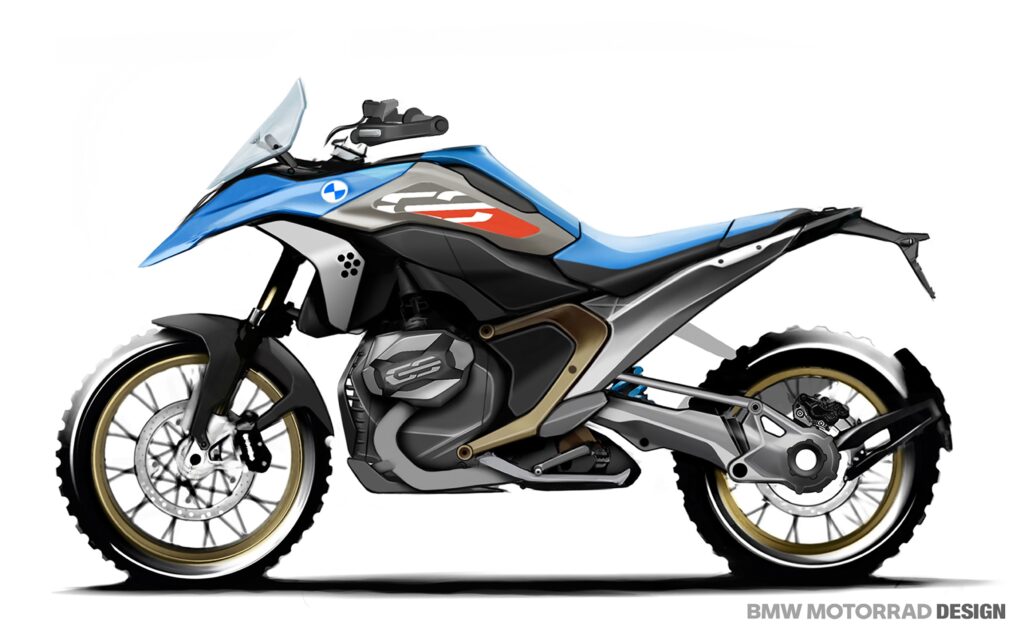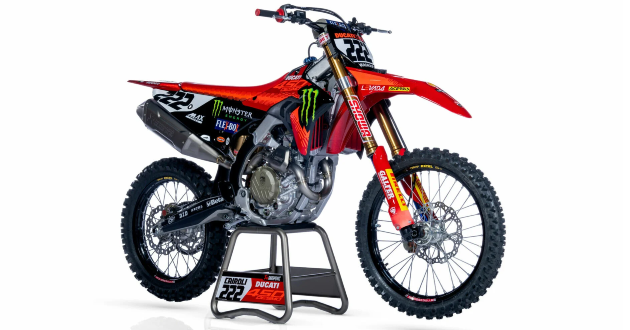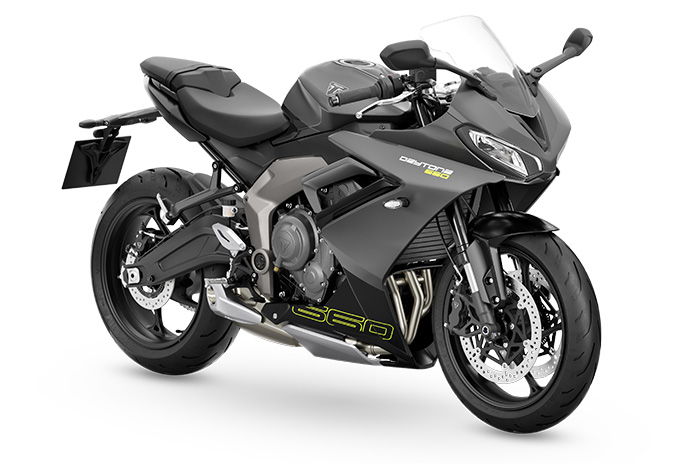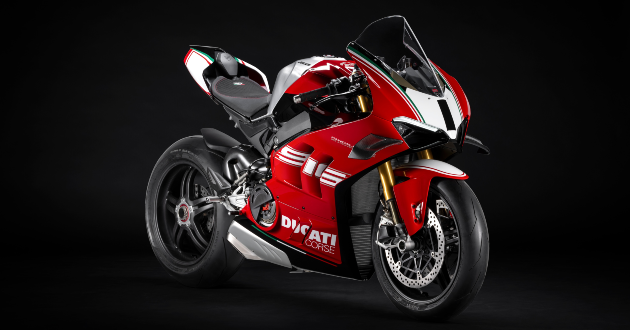The 2024 BMW R 1300 GS revealed
BMW Motorrad has announced a thorough overhaul for its top-selling model for 2024, now called the BMW R 1300 GS thanks to an increase in displacement from 1,254cc to 1,300cc.
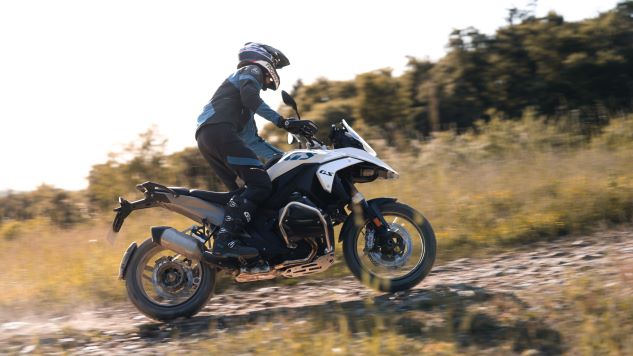
The GS’s signature opposed “boxer” Twin produces a claimed 145 hp and 110 lb-ft of torque, up from 136 hp and 105 lb-ft on the R 1250 GS.
With a claimed curb weight of 523 lb, the new R 1300 GS is also 26 lb lighter than its predecessor, according to Rider magazine’s “First Look Review” of the new adventure touring BMW. The magazine notes that BMW kicked off the adventure segment more than 40 years ago with the BMW R 80 G/S.
“With the new BMW R 1300 GS we will once again take the competition by surprise. It is defined by an even broader spread of product substance, while the reduction in complexity and vehicle weight, combined with focused equipment, enable the essence of the boxer GS to be showcased even more strikingly. With a new engine, outstanding handling, and impressive ride qualities, it will set the pace both on and off the road,” says Thilo Fuchs, head of water-cooled boxer models.
Engine
“With a noticeable increase in power and torque combined with significantly reduced weight and a very compact design, the newly designed boxer engine is the perfect drivetrain for the new R 1300 GS and a genuine milestone in the 100-year history of BMW Motorrad,” says Christof Lischka, head of development for BMW Motorrad.
The increased displacement results from a larger bore (106.5mm, up from 102.5) and a shorter stroke (73mm, down from 76). Not only did peak torque increase, BMW says there is a significant increase in torque throughout the rev range, with 96 lb-ft or more available between 3,600 and 7,800 rpm. The engine is also said to run more smoothly, and repositioning it within the frame reduces vibration.
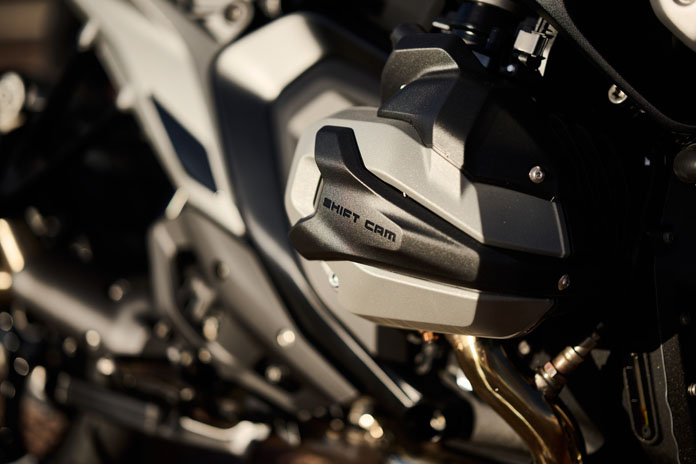
Returning is the BMW ShiftCam system that varies the valve timing and valve stroke on the intake side, but the camshaft drive arrangement has been revised. A new 2-into-1 stainless steel exhaust is lighter and optimized to work with ShiftCam. Of the 26 lb shaved off the GS, 8.6 lb came from the engine and another 5.7 lb from the rest of the powertrain.
The new 1,300cc Boxer makes a claimed 145 hp, making it the most powerful R-series Boxer ever.
As part of the redesign, the 6-speed gearbox was moved under the engine, which reduces the overall length of the powertrain and better centralizes mass. The transmission now uses a sensor signal transmitter and a torsion magnet for the optional Shift Assistant Pro quickshifter, which BMW says provides a more direct feel. The driveshaft now has larger universal joints, and the rear axle now has a longer axle stub for easier mounting and dismounting of the rear wheel.
Ride Modes
Four ride modes are standard: Road, Rain, Eco, and Enduro. The optional Riding Modes Pro adds Dynamic, Dynamic Pro, and Enduro Pro, and the “Pro” modes are customizable. The R 1300 GS can be further customized to show only preferred ride modes. Also standard is Engine Drag Torque Control (MSR), Dynamic Traction Control (DTC), Dynamic Brake Assist (DBC), and Hill Start Control (HSC).
The entire chassis of the 2024 BMW R 1300 GS has been revised. Replacing the former tubular-steel bridge main frame is a new steel sheet metal main frame, which BMW says allows for more compact packaging as well as increased stiffness. And replacing the former tubular-steel subframe is a die-cast aluminum unit that is said to be lighter, stiffer, narrower, and more tightly bonded to the main frame for added stability.
Suspension
“Another thing we wanted to achieve with the new BMW R 1300 GS was to stop the trend of getting bigger and bigger – and in fact, we managed to reverse this trend. Our team achieved a significant reduction in weight and dimensions, resulting in an extremely focused and lean GS. The bike’s engineering is packaged as compactly as possible using innovative design and manufacturing methods,” says Jochen Beck, project manager, BMW R 1300 GS.
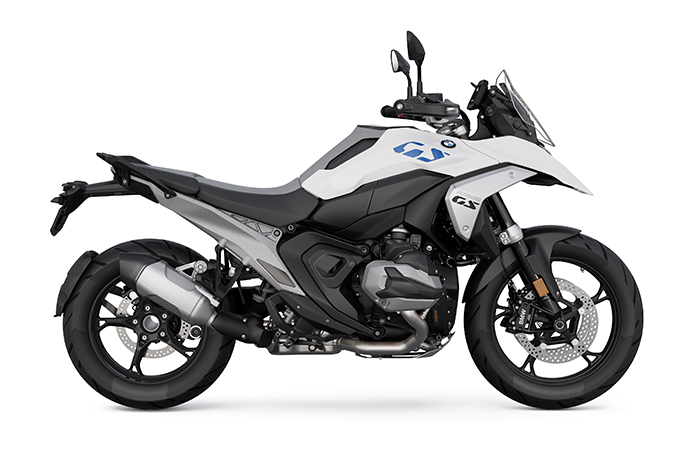
The suspension consists of the front Evo Telelever and rear Evo Paralever. The new Evo Telelever incorporates a novel flex element whereby the upper fork bridge is “pivotally and rotatably connected via a radial swivel bearing to a sturdy steering shaft tube, which in turn is guided in the main frame via a cylindrical roller bearing at the top and a deep groove ball bearing at the bottom.”
BMW says the new design offers significantly greater rigidity as well as improved stability. The new Evo Paralever has a stiffer connection to the shock, a longer single-sided swingarm for increased traction, a quick-release axle, and a swingarm bearing that is now off-axis to that of the rotation of the cardan shaft joint.
The optional Dynamic ESA (Electronic Suspension Adjustment) has been updated as well. The system not only adjusts front and rear damping in real-time based on settings and conditions, but it also now adjusts spring rate, automatically adjusts for different loads, and integrates with different ride modes.
Similar to the Adaptive Ride Height available on the Harley-Davidson Pan America and the recently announced Active Preload Reduction available on Triumph Tiger 1200 models, a new option on the R 1300 GS is adaptive vehicle height control, which reduces seat height from 33.5 inches to 32.3 inches during slow travel and when stopped. Also available is optional sports suspension, which adds 0.8 inches of suspension travel front and rear and a firm setup designed for off-road riding.
ABS Pro
Standard equipment on the R 1300 GS includes Full Integral ABS Pro, which has Pro settings that turn ABS off at the rear wheel. Optional Dynamic Brake Control prevents unintentional throttle application during braking and reduces drive torque to get the most out of the rear brake for optimal stability and shorter stopping distances.
Replacing the GS’s signature asymmetrical headlight is a new centralized LED headlight surrounded by an X-shaped matrix of four LED running lights, and the optional Headlight Pro adds a cornering function. LED front turnsignals are now integrated into the handguards.
Riding Assistant
The R 1300 GS also comes standard with a 6.5-inch TFT display with Bluetooth connectivity, the Multi-Controller wheel on the left handlebar, tire-pressure monitoring, heated grips, USB and 12V outlets, Keyless Ride, and Dynamic Cruise Control. The new optional Riding Assistant adds radar sensors to enable Active Cruise Control (ACC), Front Collision Warning (FCW), and Lane Change Warning (SWW
In terms of styling, the new GS has a more aerodynamic look, with a sharper beak, a flatter tank, and a slimmer tail section.
Pricing for the 2024 BMW R 1300 GS starts at $18,895. Find out more on Rider’s website. BMW North America also announced that it has lifted the “stop sale” it had self-imposed recently due to an evaporative fuel leak issue.





